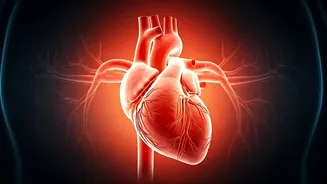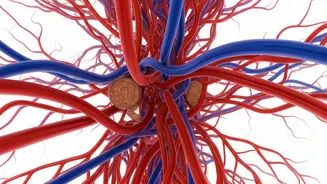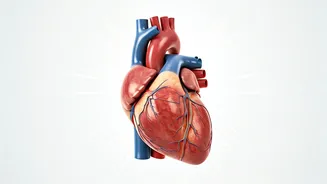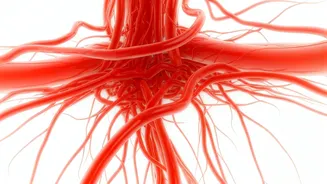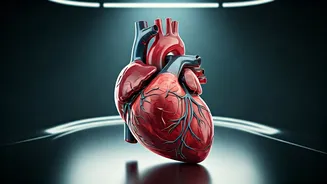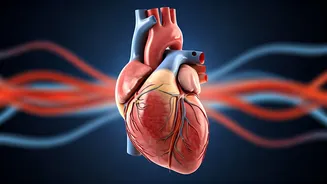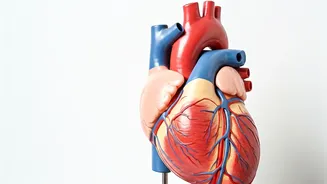Recognizing Sluggish Circulation
Before diving into solutions, it's important to understand the signs of poor blood circulation. Several indicators could signal that your blood flow is
not optimal. Common symptoms include cold hands and feet, which occur because the extremities receive less blood. Another key sign is numbness or tingling, often experienced in the hands, feet, or legs. Additionally, skin discoloration, where the skin may appear pale, bluish, or even reddish, is a visible indicator. Leg cramps, especially during exercise, also suggest poor circulation, as do swelling in the legs, ankles, or feet. Slow-healing wounds are another indication; because blood flow is essential for healing, inadequate circulation delays the recovery process. Finally, fatigue and weakness, particularly in the legs, may be a manifestation of the circulatory system struggling to deliver enough oxygen and nutrients to muscles and tissues.
Hydrate Your System
Staying adequately hydrated is crucial for maintaining healthy blood circulation. Water is essential for blood, which is approximately 90% water. Proper hydration allows blood to flow smoothly and efficiently throughout the body. Dehydration, on the other hand, can cause the blood to thicken, making it harder to circulate. Drinking sufficient water, generally around 8 glasses a day, helps maintain blood volume and reduces the risk of blood clots. It is also important to consider individual needs; people who are more active or live in warmer climates might need even more fluids. Remember to listen to your body and drink water whenever you feel thirsty. Adequate hydration supports overall cardiovascular health, ensuring that your circulatory system functions optimally. Including hydrating foods such as fruits and vegetables is also beneficial.
Embrace Leg Exercises
Regular leg exercises are pivotal for enhancing blood circulation, especially in the lower extremities. Because the legs are often the farthest from the heart, they are more susceptible to circulation issues. Simple exercises like walking can stimulate blood flow and help prevent blood from pooling in the legs. Elevating your legs as much as possible, particularly when sitting or resting, aids venous return and reduces swelling. Other beneficial exercises include ankle pumps, which involve pointing your toes up and down to flex the muscles in the lower legs and feet. Incorporate foot circles, which can mobilize the muscles. Additionally, consider exercises that work the calf muscles, such as calf raises, which can significantly improve blood circulation. Regular practice of these exercises not only improves circulation but also reduces the risk of conditions like deep vein thrombosis.
Consume Circulation-Boosting Foods
What you eat can significantly impact your blood circulation. Certain foods contain properties that naturally improve blood flow and vascular health. Incorporating these into your diet can make a substantial difference. Consider adding foods rich in antioxidants, such as berries and dark leafy greens. These foods help protect blood vessels from damage and improve blood flow. Include foods that contain omega-3 fatty acids, such as fatty fish like salmon and mackerel. These healthy fats can reduce inflammation and improve blood viscosity. Also, consider foods that contain nitrates, such as beets, which can help dilate blood vessels, thus improving circulation. Regular consumption of garlic and onions is also beneficial; these foods have been shown to help prevent blood clots and promote healthy blood flow. A balanced diet incorporating these foods is an effective strategy to support a healthy circulatory system and overall well-being.
Review Your Lifestyle Choices
Several lifestyle choices can significantly influence your blood circulation and overall vascular health. Certain habits can either promote or hinder optimal blood flow. Smoking, for instance, is a major culprit, as it damages blood vessels and impairs circulation. Quitting smoking is one of the most beneficial changes you can make for your cardiovascular health. Prolonged sitting or standing can also impede blood flow, so take breaks to move around, stretch, and change positions regularly. Managing stress is important, as stress can cause blood vessels to constrict. Relaxation techniques like yoga or meditation can help reduce stress levels and improve circulation. Regular exercise is paramount; aim for at least 30 minutes of moderate-intensity exercise most days of the week. This boosts blood flow and strengthens the cardiovascular system. Being mindful of these lifestyle factors will support improved vascular health and promote overall well-being.
